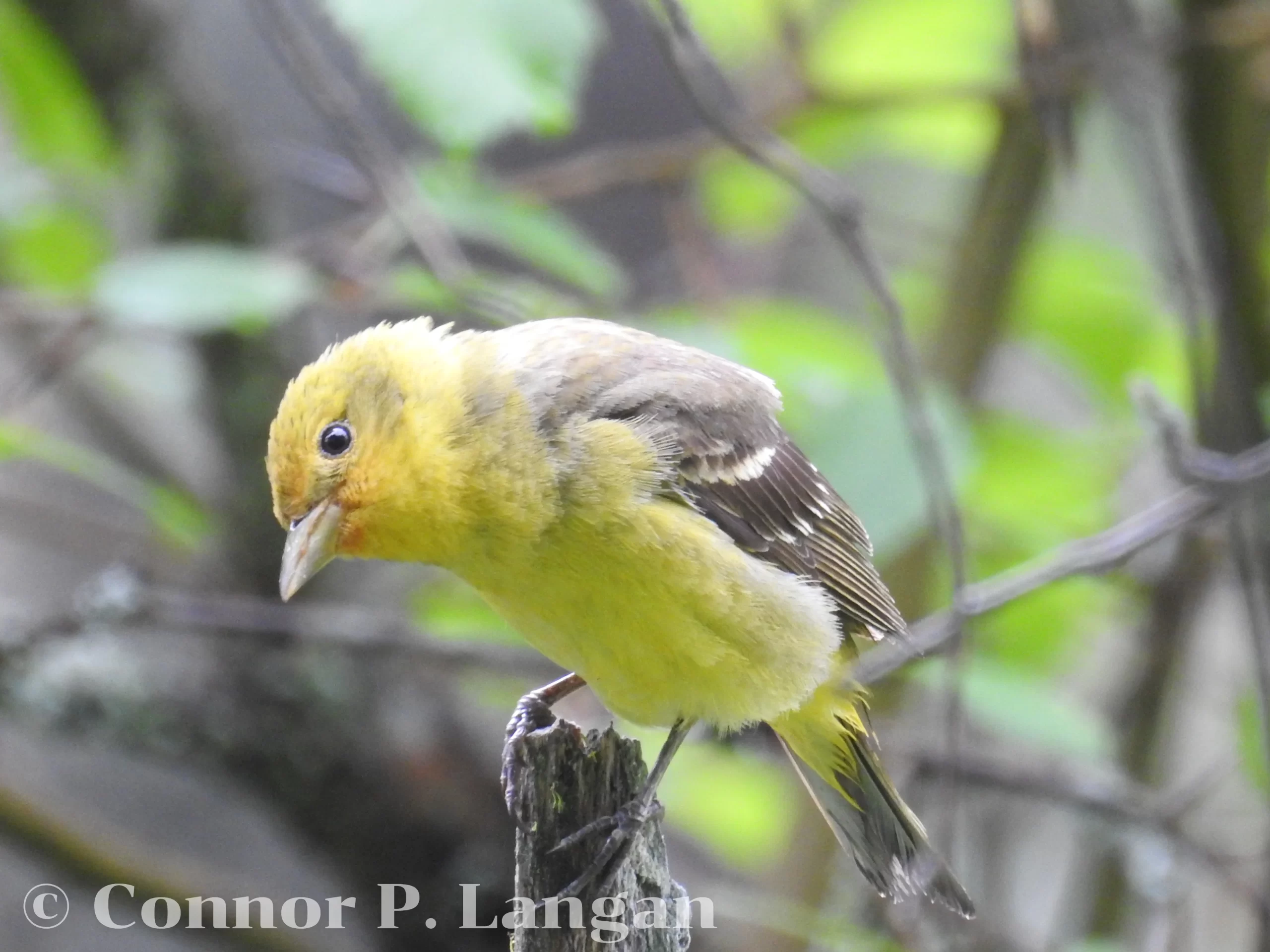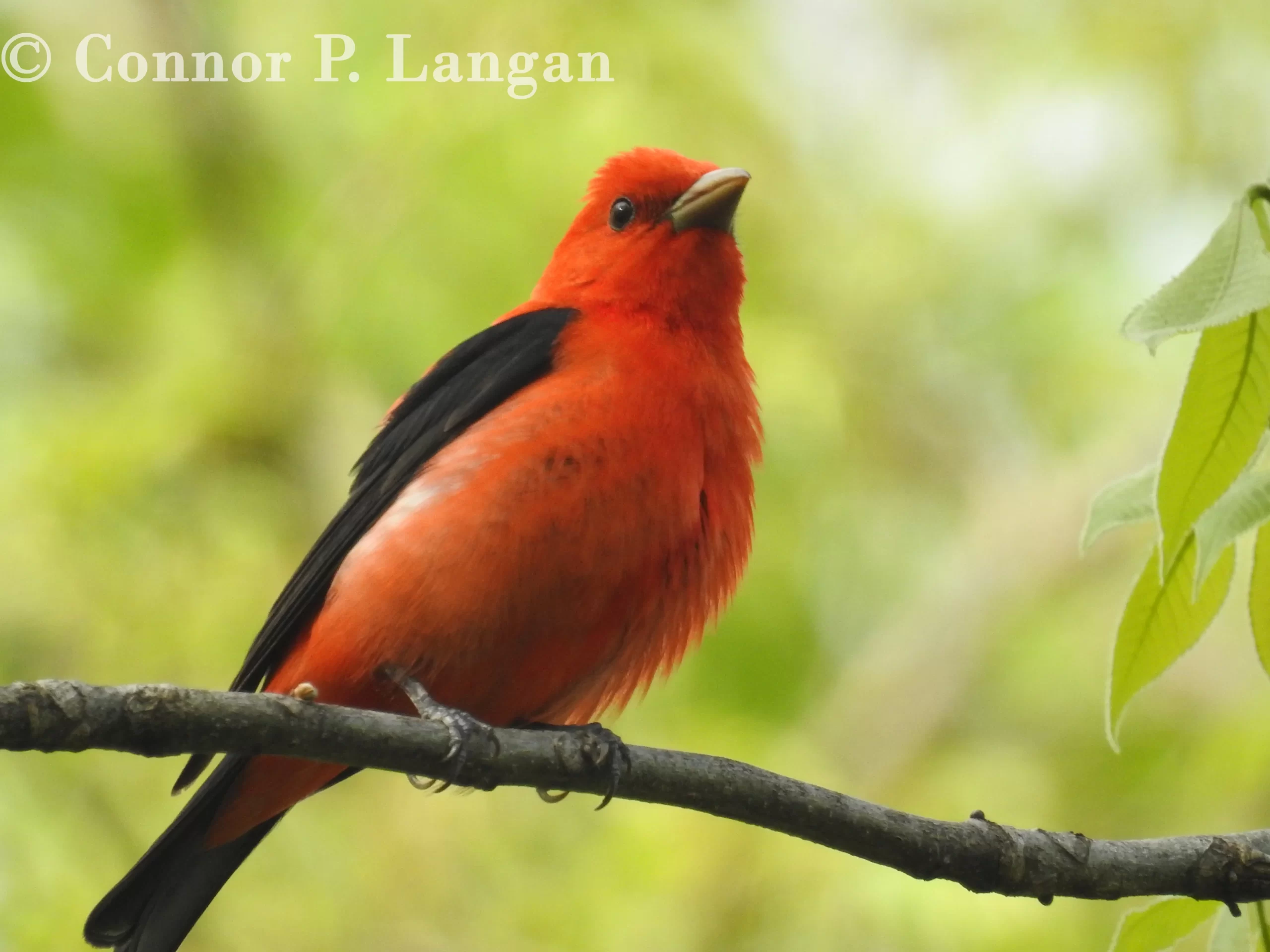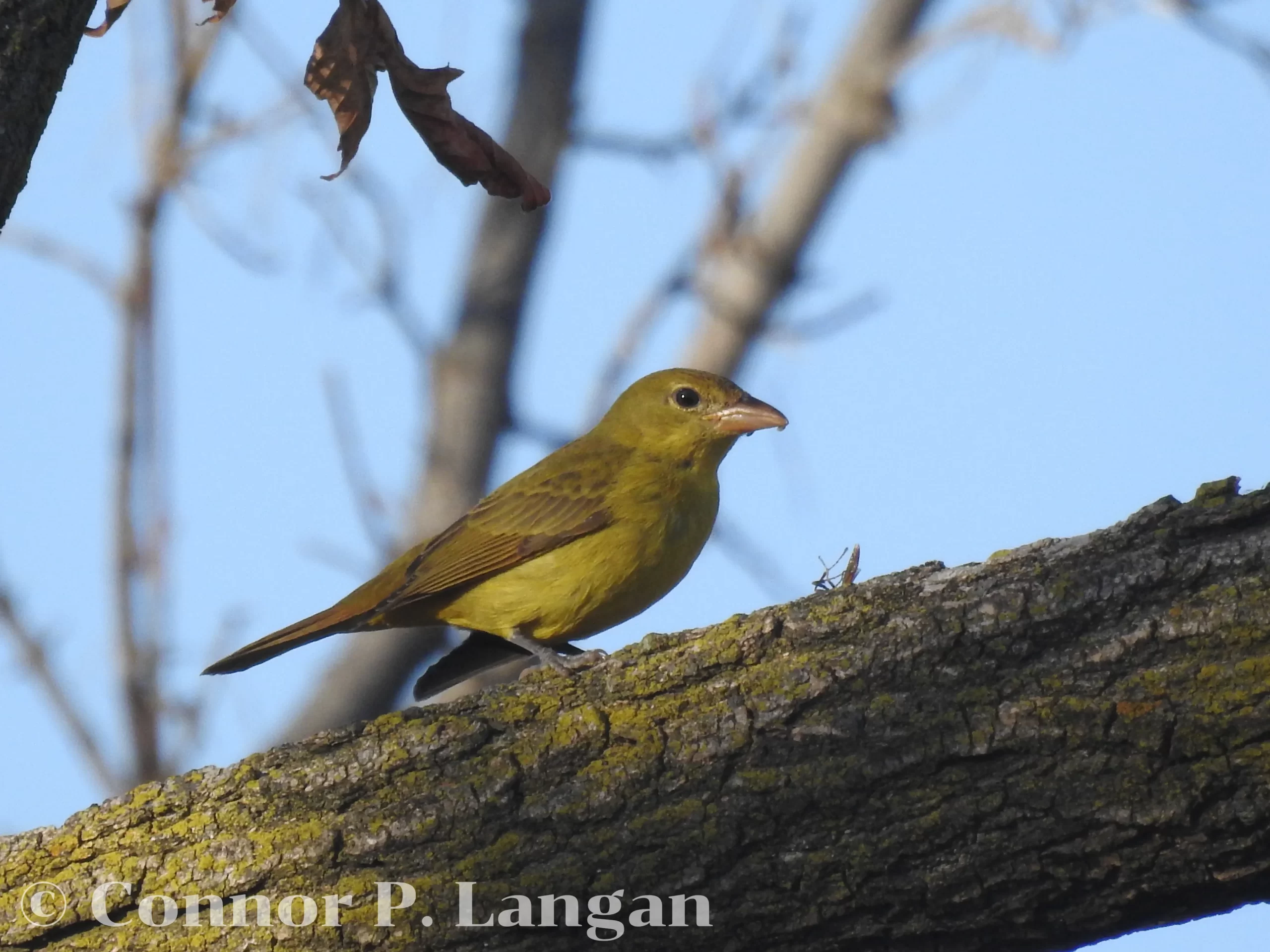Description
- Western Tanagers have a bit of a chunky profile overall. These birds have thick, short beaks and medium-length tails.
- These tanagers are about 6 inches to 7.5 inches in length, and they weigh 0.8 to 1.3 ounces.
- Male Western Tanagers are stunning birds, with red-orange faces. They also have yellow bodies, black backs, and black wings with two yellow wingbars. Males develop yellow faces and lose their red-orange face color during the nonbreeding season. Females, on the other hand, are not as striking.
- Female Western Tanagers have a subtle appearance compared to the males. Females are lime green overall with dark gray wings that have two pale wingbars. Some females may be very pale overall rather than lime green.
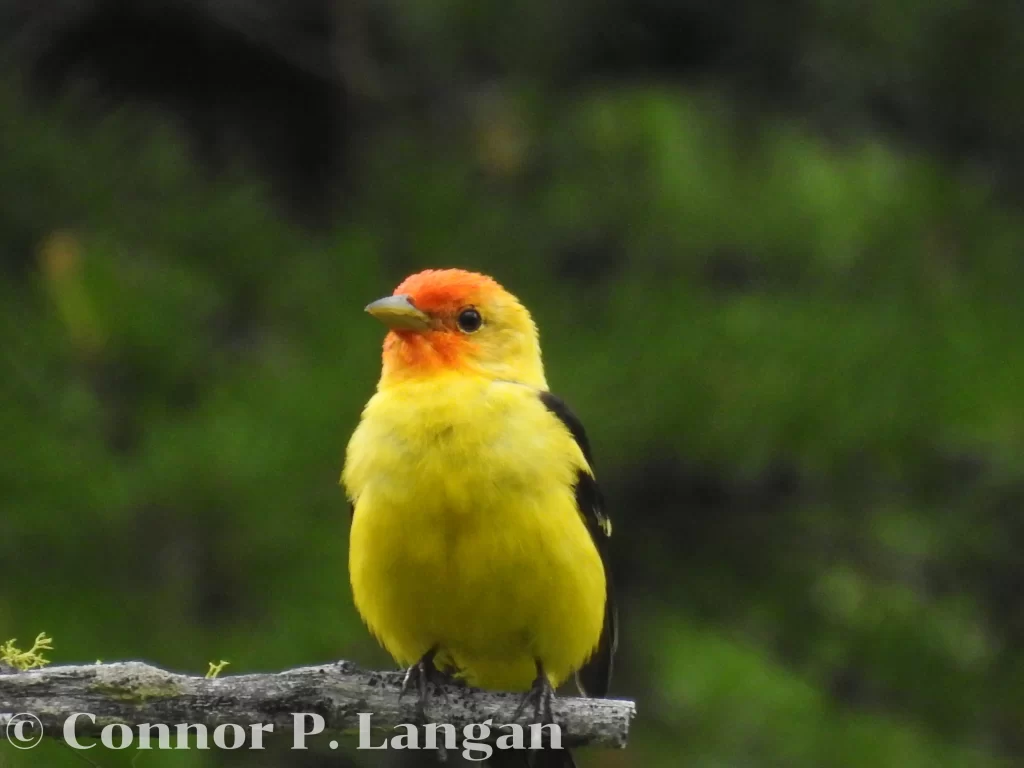
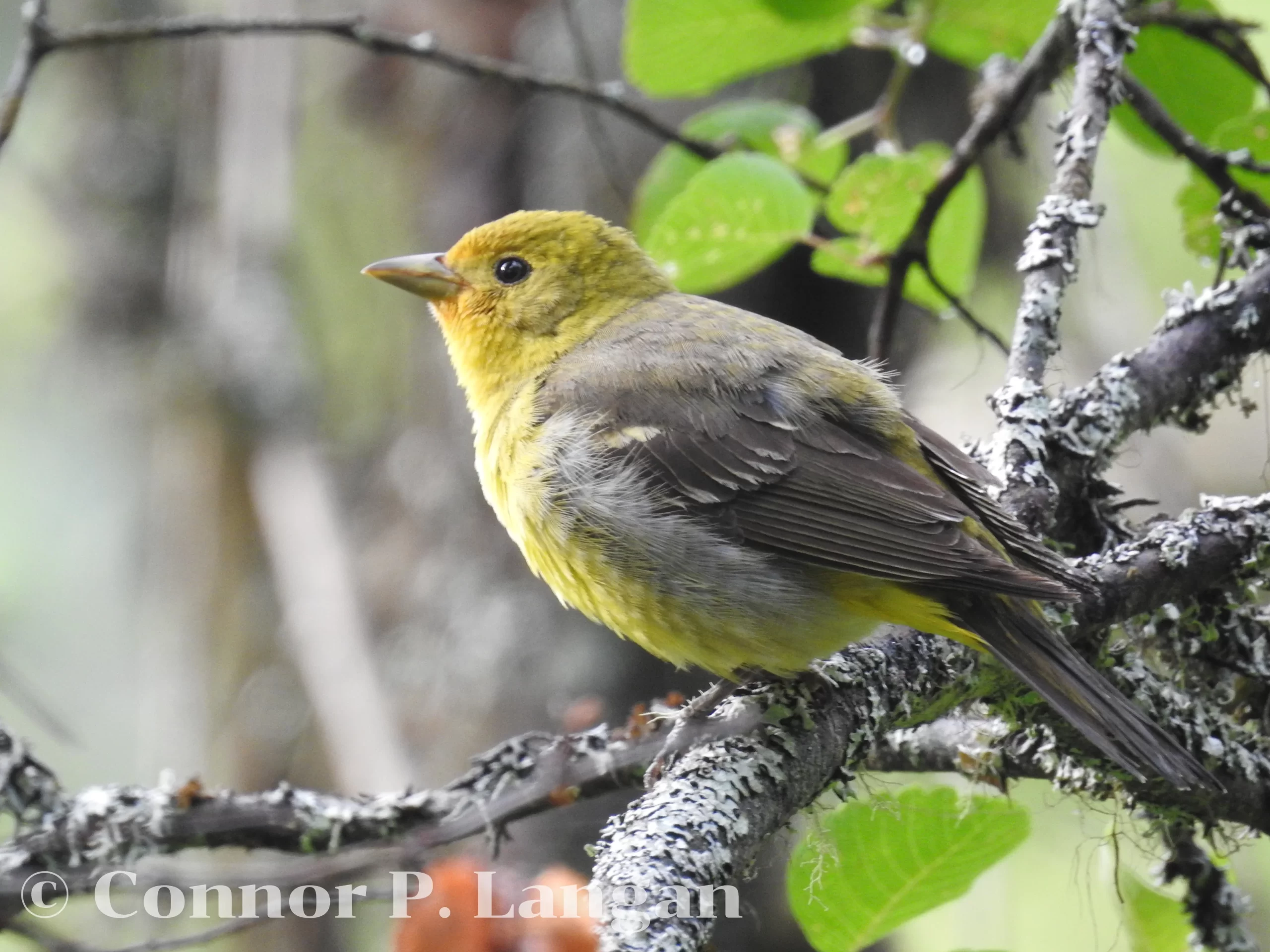
Behavior
- Western Tanagers do not have frenzied behavior like many other songbird species. Instead, Western Tanagers are relaxed and slow-going during their daily activities.
- These birds may sally out from branches and grab insects. Otherwise, they may subtly capture insects from the foliage of trees.
Diet
- Western Tanagers rely on insects to make up the majority of their diets during the breeding season. While these birds also eat insects in the nonbreeding season, they’ll eat fruit as well. Western Tanagers have also been known to eat seeds and tree buds occasionally.
Habitat
- Watch for Western Tanagers in coniferous forests during the breeding season. These birds will use a variety of different pine tree species during this time. Western Tanagers also breed in deciduous and mixed forests less frequently. Additionally, Western Tanagers seem to prefer open woodlands over dense stands of forest.
- Western Tanagers may appear in any forested habitat during migration. These birds survive in open, mixed woodlands in the winter.
Range
- Western Tanagers are true to their name, being found in western North America. Specifically, these birds breed west of the Great Plains ranging from Baja California up to the Yukon.
- Western Tanagers winter in central Mexico south to Panama.
Breeding
- Western Tanagers are thought to be socially monogamous by nature. Males sing constantly as they establish and maintain a territory.
- Female Western Tanagers handle all of the responsibilities related to the nest. A nest can be built in 5 days. Females do all of the nest construction. Although males do not assist, they watch over females for most of the nest-building process.
- Western Tanager nests are made from an assortment of branches and plant fibers. Although female Western Tanagers commit plenty of time to building the nest, the nest is quite underwhelming. Indeed, the nest is essentially a sloppy cup-shaped collection of sticks.
- Females typically lay a single brood of eggs each year, with each clutch containing 3 to 5 eggs. It takes around 2 weeks for the young to hatch from the eggs, and they leave the nest 11 to 15 days later.
Backyard Birding
- Backyard birders across North America are always happy to observe this species in their backyards. Unfortunately, Western Tanagers rarely visit bird feeders. These tanagers do not nest in birdhouses either. Therefore, having some sort of bird bath may be the best way to entice this species to visit a backyard.
Population Status
- Western Tanager populations have increased in the past half-century. This species currently has a population of more than 15 million birds.

